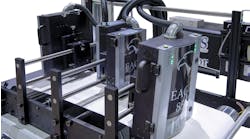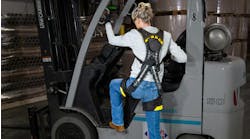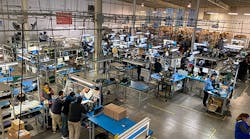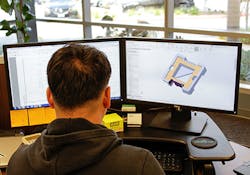When it became apparent COVID-19 was a global crisis, as a company, VCC couldn’t just wait and see. With deep expertise in design and prototyping for illuminated components used in many industries—including medical—we came up with a plan to leverage this knowledge and help combat the virus on the front lines.
Together, we made a commitment to donate our time and resources to help OEMs and other manufacturers—some that completely shifted production from their bread and butter products to those that can be used to prevent the spread of this virus—and created Crisis ColLAB to deliver our light pipe and PCB design and prototyping services.
Simply put, here’s how it works: OEMs fill out an online application, then partner with our team of engineers and designers to design new medical equipment or optimize existing designs to ensure optimal performance and reliability.
Since launching the Crisis ColLAB in late March, we’ve:
- Ensured design and engineering teams focus on medical devices and coronavirus-related projects first
- Donated 2,000 components for defibrillators to aid in the international care response
- Expedited production of 60,000+ components for ventilators and respirators
We’ve also been able to support the “startup ventilator manufacturing” trend, where 90% of our new component orders are from companies just entering the ventilator space.
Yet, what we’re most proud of throughout our Crisis ColLAB endeavor is helping one medical OEM optimize performance and reliability on an innovative vaccine-delivery device.
Innovating Smarter, Faster, and At a Distance
A medical device manufacturer approached us with an original design that included three separate indicators located at various points on a handheld machine.
Working to provide lifesaving equipment forced us to innovate under pressure, without the benefit of live, in-person collaboration. Whenever possible, our team worked remotely, collaborating with clients and each other via video calls.
The existing vaccine-delivery device included light pipes that did not perform as needed due to severe light bleed.
Our team developed and validated 3D prototypes of the light pipes, which were produced in VCC’s engineering lab. To maintain social distancing, we collaborated with designers and the client via video calls and used alternating shifts when key personnel needed to use the onsite lab to print the prototypes.
The result? A combined increase of 1,561% in efficiency while working within the design and time constraints associated with the race for a COVID-19 vaccine.
Knowing how supply chains were disrupted around the globe, we took proactive measures with distributors to ensure any designs we created could be made quickly using in-stock items.
While the vaccine itself must be proven in clinical trials and approved by the FDA before being available for the public, the light pipes we designed will be ready to go by June.
When Minutes Count, So Does Experience
Whether it’s a ventilator, respirator, touch-free thermometer or hospital bed, proper status indication is mission-critical in hospitals and testing facilities.
One of the most impactful benefits of partnering with experts to design indicators for lifesaving equipment? How quickly we can help them get the product into production (and ultimately, the hands of our healthcare heroes) without sacrificing reliability.
As you’re probably aware, light pipes are more complex than they seem. The viewing angle, working environment, design of the device, even the face of the LED can play a huge role in faster, more reliable operation. User experience should drive the design of HMI, as how and where status indicators are used can speed up or slow down reaction times and readability.
And getting it right the first time by asking important design questions early in the process can make all the difference in how many iterations a product must go through.
Efficiencies in production are also realized when design experts are brought on early in the process. When status indication decisions are made on the front end, OEMs have a better chance of getting exactly what they want faster, and at a lower cost:
- Inside intel into available products and supplies: When we know the desired lighting specifications, we can help find a solution that is often a standard product vs. a custom product.
- Fewer LEDs needed to get the job done: Where an original design may require 20 LEDs to achieve a desired brightness or function, when engineers are involved early that number could be cut in half, saving on the BOM and simplifying the design.
- Streamlining production and assembly: Specifying press-fit, snap-fit, and other features simplify assembly and can dramatically reduce lead times and production costs.
The vaccine-delivery device mentioned previously is the perfect example. We worked within some challenging design and time constraints to optimize three disparate underperforming light pipes.
Utilizing in-stock components, we quickly designed, tested, and prototyped a solution that delivered speed, reliability, serious efficiency, and included press-fit and snap-fit products to shorten production timelines.
What Happens Now and Next in Manufacturing?
Of course, none of us can predict the future. COVID-19 has forever changed how we work. In the short-term, it’s affected the products we produce and how we produce.
Under a pandemic, most demand for new manufacturing equipment will revolve around medical supplies and finding a vaccine. Even for non-medical OEMs that shifted their focus to producing PPE, new pieces of equipment may be required to modify existing lines as quickly as possible.
However, OEMs can’t let this uncertainty paralyze them from making capital investments, which are now relatively cheap to finance.
Whether it’s AI, robotics or edge computing, investment in tech should focus on:
- Minimizing the risk of disruption anywhere in the supply chain
- Improving the buying experience
- Enhancing worker safety onsite
- Ramping up production efficiency through automation
- Increasing resilience and decision making
Companies that innovate and act on this change now will have the opportunity for growth.
Before the pandemic, touchscreens seemed like a great idea. Now, we will shift to the polar opposite, seeing an increase in the demand for touch-free options at the checkout counter, gas pump, and beyond.
As OEMs look to upgrade and evolve their products for our contact-free new normal, there are products available like capacitive touch LED sensors that work well with gloved hands to help ease the transition to totally touch-free device design.
You’ll also see an increase in demand for products that use UV light to sanitize surfaces, as well as our hands as we dry them in public restrooms.
Equally as important as what OEMs will produce, is where they’ll do it. Global supply chains require a fresh look to bolster resilience and avoid costly disruptions like this.
There are several ways to help mitigate these risks, including:
- Bringing all or some offshore operations back to North America
- Implementing a flexible supply chain
- Having at least three diverse sources of key components
Electronic components are small and relatively cheap to ship regionally. In our business, we’ve seen a 1,000% increase in opportunities, since customers in Silicon Valley and San Diego can be within a few hundred miles of our factory in Mexico. The China model, where low costs made it easy to tolerate a 5,000-mile distance, is breaking down, due to tariffs, delays, and risks of disruption like coronavirus. We predict that the nearshoring model will increase in the coming months and years, especially for more complex PB or cable assemblies.
From how we work to what and where we produce, COVID-19 will forever leave a mark on the global economy.
We may still have a long road to recovery, but these uncertain days can push us to innovate and adapt for the next big disruption. Smart companies won’t let this opportunity pass without addressing weak points and inefficiencies in how they operate.












